Producers
-
Description:
Family owned Teerenpeli Distillery was established 2002. Owned by Anssi (CEO) and Marianne Pyysing It was situated in the same building with Restaurant Taivaanranta in the city centre of Lahti, Finland. The larger main Teerenpeli Distillery is located with the brewery outside Lahti City center. Established in 2015 this largest distillery in Finland produces up to 160 000 litres per year.
Teerenpeli uses traditional pot-stills, handmade in Scotland. The spirit is matured in oak casks for at least three years, as required by law. At the moment different sizes of sherry, bourbon, port and rhum casks are used. These casks come directly from Scotland, USA, Spain and Portugal.
Teerenpeli Whisky has got character of its own from the best lightly peated Finnish malt and fresh ground water. The water used in the production: we use clear and fresh local ground water, which is filtered through the Salpausselkä esker, a gravel ridge, formed by the ice age about 10 000 years ago.
To produce our lightly peated new make (5 ppm) we use 87% pilsner malt and 13%, heavily peated malt. Pilsner malt comes from local malting company in Lahti, Finland. The malting barley used is grown within 150 km of Lahti. Heavily peated malt comes from Scotland and is dried (kilned) with Scottish peat. Wort is fermented with special whisky yeast for 72 hours and the end product (wash) is around 8% ABV. Copper pot stills produced by Forsyths (Scotland) for Teerenpeli ’s own design specifications are used for the distillation. The distillery operates 3 000 l wash still and 2 x 900 l spirit stills. These are also heated with our own wood pellet burner. All Teerenpeli whisky casks are matured minimum of 3 years in the casks as required by the EU. Forty foot ex-reefer sea containers are used mainly for maturation. No heating or cooling is used, which lets the Finnish weather affect the maturation.
Image: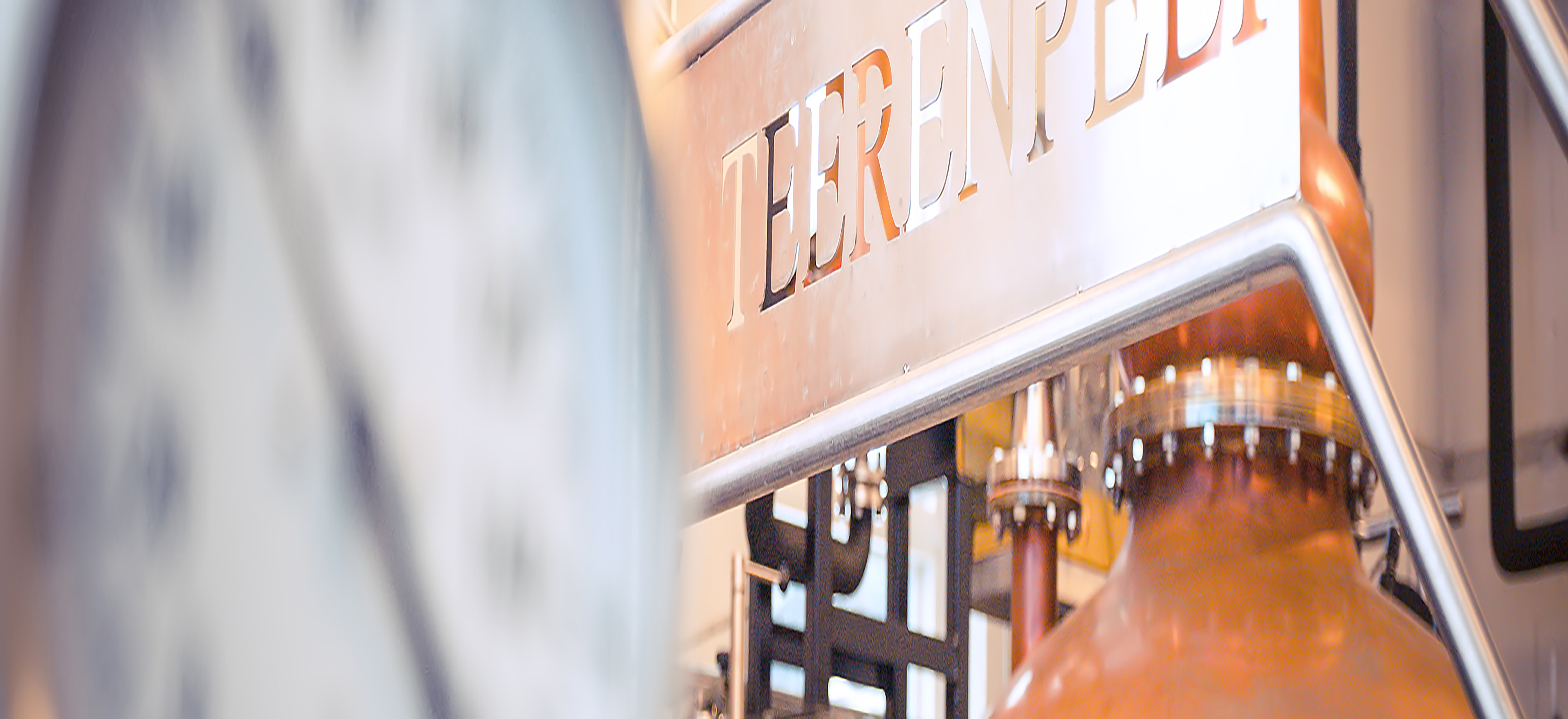 Region:
Region: -
Description:
Armin Tement happily joined his family winery in Sudsteiermark (South Styria) in 2005. His father, Manfred Tement, had over time, firmly established Weingut Tement as a benchmark producer for Styrian Sauvignon Blanc and Morillon. Manfred was one of the founders of STK (Styrian Terroir and Klassik Wine growers association) in 1986. STK was established because there were no government regulations established at the time for making fine wine in the region. Manfred preferred Sauvignon Blanc to the most widely planted and highly productive Welschriesling. It was a big step to prioritize quality over quantity and eventually in 1991, Tement was recognized by the German magazine, Der Feinschmecker, for making the ‘world’s best Sauvignon Blanc’, essentially putting Tement and this small winegrowing region on the international wine map.
When Armin joined in 2005, his goal was not only to make an unequivocal Styrian wine, but also a wine that expresses, in his words, ‘Tement’s own style”. With the support of the family, Armin began following organic agriculture, eventually converting all eighty hectares over the next ten years and becoming certified organic in the 2018 vintage. South Styria gets a lot of rain and incredibly, Armin, Stefan, and Manfred have converted all of their sites to biodynamic agriculture, 2022 is the first vintage certified biodynamic by both Demeter and Respekt. There are three main weather influences that are a part of the terroir here: the Adriatic Sea to the south brings storms and rain, the Pannonian Plain brings hot and dry weather, and the Alps bring cool air at night.
Styria is one of the three major growing regions in Austria and it’s the smallest with 4,633 hectares planted. The subregion of Sudsteiermark, or South Styria, covers 2,563 hectares and it lies on the border with Slovenia. Styria is quite different from the rest of Austria as the main white varietal is neither Grüner nor Riesling, but Sauvignon Blanc! Other white varieties also do well here, notably Gelber Muskateller, Pinot Blanc, and Morillon, the local name for Chardonnay. In Sudsteiermark, the wines are categorized by quality level, with regional wines at the entry level, village wines are a step up in quality and represent the terroir of the village, and the single vineyard wines are the pinnacle. All of the wines are labeled “Sudsteiermark DAC”. Tement makes wines from three villages, Ehrenhausen, Gamlitz, and Kitzeck-Sausal. And the highest quality wines are single vineyard sites which are designated either Erste Lagen or Grosse Lagen, the equivalent of premier cru or grand cru. The most famous site in Sudsteiermark is Zieregg where both Sauvignon Blanc and Morillon are planted.
Tement is specialized in making exceptional single-vineyard wines, but the flagship is the regional Sudsteiermark Sauvignon Blanc “Kalk & Kreide”. It is a blend from fifty sites and the name describes the main terroir, limestone and clay. Like all of their wines, the grapes are harvested by hand, undergo a maceration of twelve to twenty-four hours and then fermentation happens spontaneously with indigenous yeasts in stainless steel. “Kalk & Kreide” is aged on the lees for six months before release. All of the wines are spontaneously fermented and are made without any sulfur during vinification or aging. They only get a little sulfur one month before bottling, allowing the wines to get a full expression of their site. The single-vineyard wines are fermented and aged in large neutral oak barrels for eighteen to twenty-four months and are bottled without filtration. Some wines do not get sulfur for more than 24 months, and yet the single-vineyard wines are incredibly precise and express their terroir brilliantly.
Over the last fifteen years, the gradual changes taking place have garnered a lot of attention, but it’s worth noting that the whole family is involved. Armin works with his brother, Stefan, who joined him in 2010. His father is still working as well, although Armin officially took the reins in 2008. Armin’s wife, Monika is also involved in keeping everything running smoothly. And Armin’s mother runs the recently established B and B. All that Weingut Tement has accomplished in the last fifty years is incredibly impressive and it's made it not only one of the most important wineries in South Styria, but also in Austria. Tement has become an icon in South Styria and Austria and the accolades are well deserved. Bowler is incredibly honored to represent the Tement wines in the United States.
Image: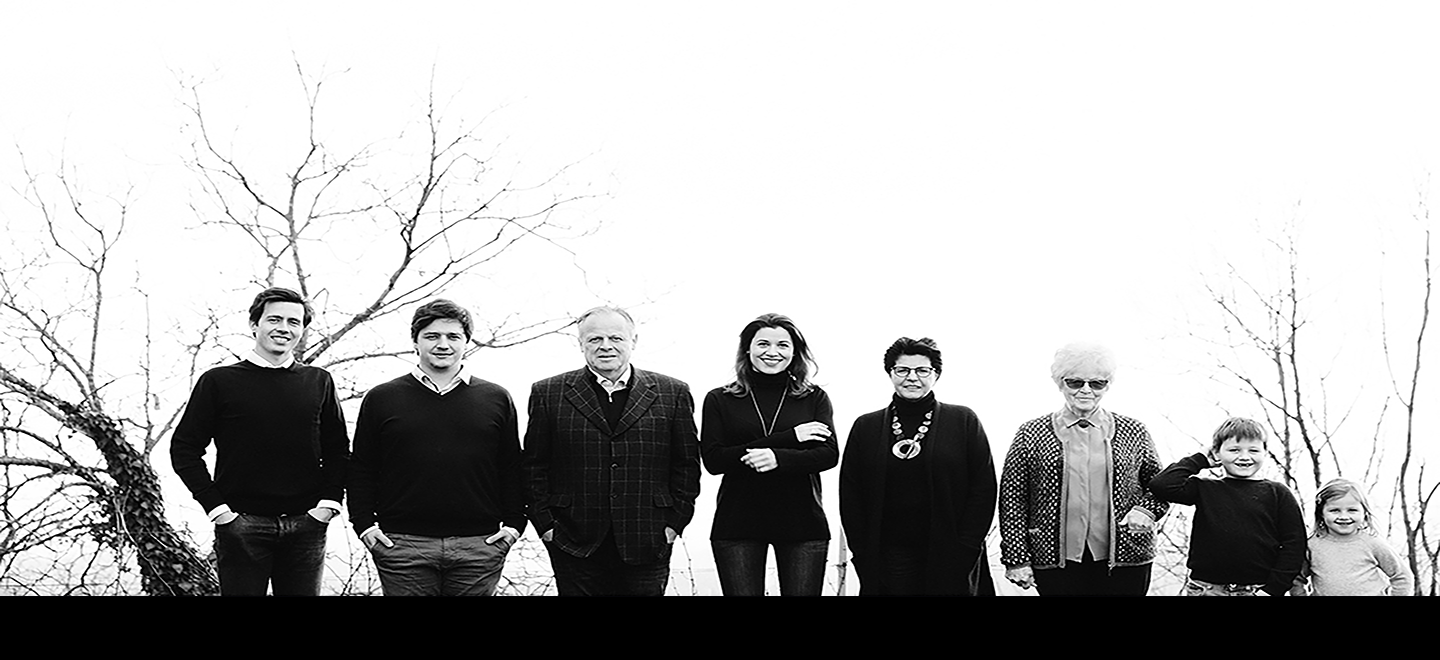 Region:
Region: -
Description:
Terrazzi Alti, the High Terraces, makes its happy debut at Bowler. Siro Buzzetti is Valtellinese through and through, born and raised in the hamlet of Triasso, near the “big town” of Sondrio. Not from a winemaking family, he became its first vignaiolo in 2005, as his love for his native land pushed him out of the paper business and into the business of drastic, terraced vineyards in the cru of Sassella, where he started with a mere 0.1 hectares of old vines. Since then the estate has expanded exponentially, to a whopping 1.5 hectares of vines and one hectare of woods. Today Siro is joined by his son, Francesco.
We’re far from the Barolo zone here, three and a half hours to the northeast into Lombardia--north of Milan, north of Lake Maggiore, almost to Switzerland. It’s here that we find Nebbiolo’s most Alpine expression. Its local name, Chiavennasca, is usually attributed to the nearby town of Chiavenna, but Siro explains that it truly derives from either ciuvinusa (più venosa in Italian, more vein-y, referring to Nebbiolo’s noted vigor) or from ciuvinasca (più vinosa, more vinous, meaning the variety that made the greatest wine).
Valtellina was carved out by the glaciers, with the valley oriented almost perfectly east/west. The vineyards are the north side of the valley, facing due south, perched impossibly into the cliffs on dramatic dry stone wall terraces. Terrazzi Alti’s vines, shooting up from 320m to 600m, are trained in the local archetto valtellinese, with the rows planted north/south on the east/west terraces, negating any attempt at mechanization. The mother rock here, fairly rare in the world of Nebbiolo, is metamorphic gneiss rich in porphyry, quartz, and feldspar. The rock is weathered down into poor, acid and shallow topsoils that are around 70% sand, 25-30% silt, and, importantly, almost no clay. Terrazzi Alti works delicately to encapsulate these distinct conditions.
Watching Siro and Francesco scale these vineyards like mountain goats, the brutal task of creating and maintaining these walls is on full display. This is what is meant by heroic viticulture. It cannot be easy, and there’s no illusion of making significant quantities of wine here. Speaking with Siro, though, one can immediately see the resolved sense of pride and satisfaction he feels from doing this work, from the luxury of being an ambassador for his homeland through the uniqueness of its wine.
Terrazzi Alti makes two wines: Valtellina Superiore Sassella and, in select years, a Valtellina Superiore Sassella Riserva, which is released a year later.
We commend our friend Marko, Nomad Wine Guy, for bringing Terrazzi Alti to our attention.
To learn more:
Image: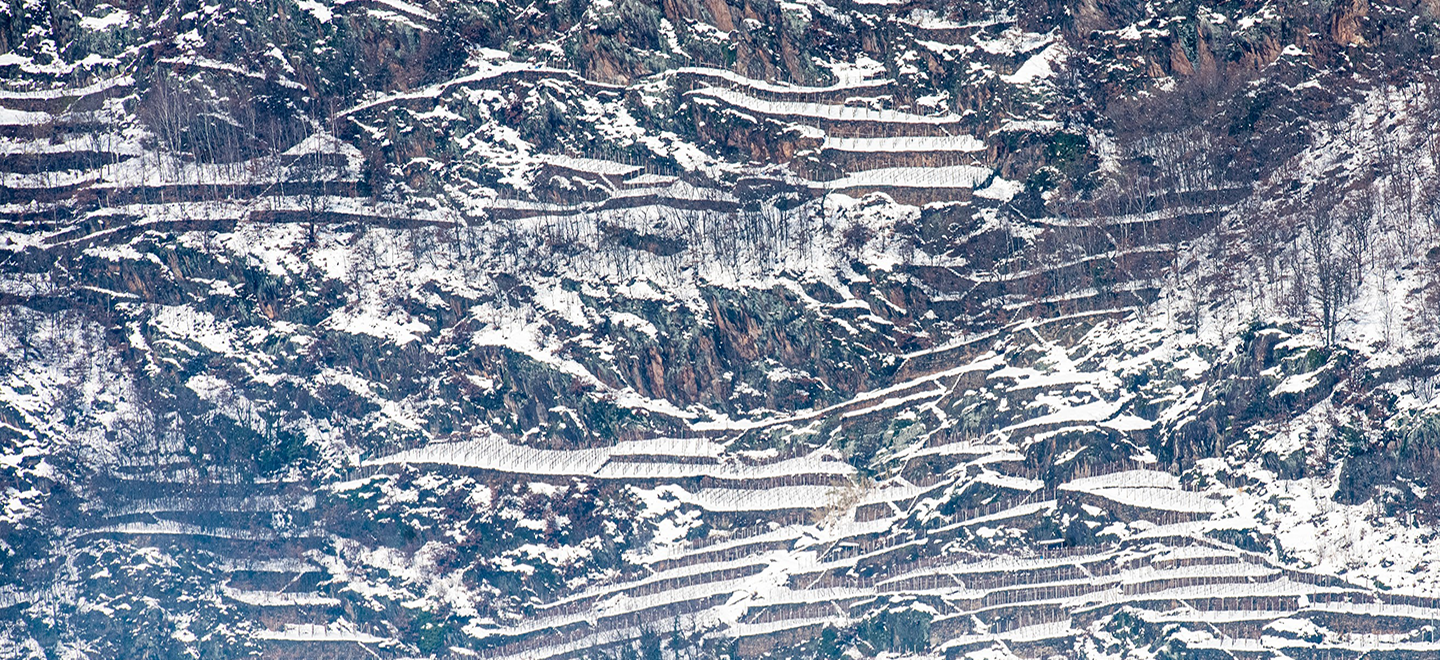 Region:
Region: -
Description:
Thank you to importer Louis/Dressner for this producer profile:
(Click here for more on Terres Dorées on Louis/Dressner's website)
Jean Paul Brun is located in Charnay, a village in the Southern Beaujolais just north of Lyon, in a beautiful area known as the "Terres Dorées" or Region of Golden Stones. Brun is the owner and winemaker at this 60+ hectare family estate and has attracted the attention of the French and American press for the wonderfully fruity and delicate wines he produces.
Brun wants to make "old-style" Beaujolais and his vinification differs from the prevailing practices in the region. He believes that the charm of Gamay's fruit is best expressed by the grapes' indigenous yeasts, rather than by adding industrial yeast. Virtually all Beaujolais is now made by adding a particular yeast during fermentation. Known as 71B, this yeast is a laboratory product made in Holland from a tomato base, which imparts wines with banana and candy aromas. It produces a beverage, but with no authenticity and little charm. Brun, on the other hand, wants to make a pure Gamay wine.
Brun's view is that Beaujolais drinks best at a lower degree of alcohol and that there is no need to systematically add sugar to the must (chaptalize) to reach alcohol levels of 12 to 13 degrees. His Beaujolais is made to be pleasurable - light, fruity and delicious - not an artificially inflated wine that shines at tasting competitions.
Only a minimal amount of S02 is used at bottling to keep the wine fresh and "headache-free". Fermentation naturally produces a lot of CO2, which acts as protection against oxidation during aging; leaving some in the wine at bottling time also helps to keep it fresh. Filtration is also minimal so that the wine keeps its original fruit and aromas. Brun’s wines are not ‘blockbusters’ in the sense of ‘big.’ The emphasis is not on weight, but on fruit: Beaujolais as it once was and as it should be.
Brun’s Nouveaus were rated as the top Nouveau of the vintage by France’s Gault Millau magazine several years in a row. Robert Parker has rated Brun as a four-star producer (the only other Beaujolais producers with four stars are in the Crus) and has written about his wines:
“Proprietor Brun is a believer in using only the vineyard’s wild yeast, rather than the synthetic yeasts used by most other producers. His beautiful wines are favorites among purists.”
2020 Update:
Starting with just four hectares of vines, Jean-Paul has truly created a self-made empire. After progressively expanding around his native Charnay in the southern Beaujolais, he began experimenting with a Cerdon-like sparkling wine called "FRV100" and a Crémant de Bourgogne, then planted some Pinot Noir and Roussanne on his clay and limestone soils and eventually started bottling those as well.In the mid 2000's, Jean-Paul set out to conquer Beaujolais' crus. He currently owns land and produces from most of them, including the most recent addition of single vineyard cuvées. All told, he now produces well over 20 different wines from over 60 hectares of vines and shows no sign of slowing down.
Image: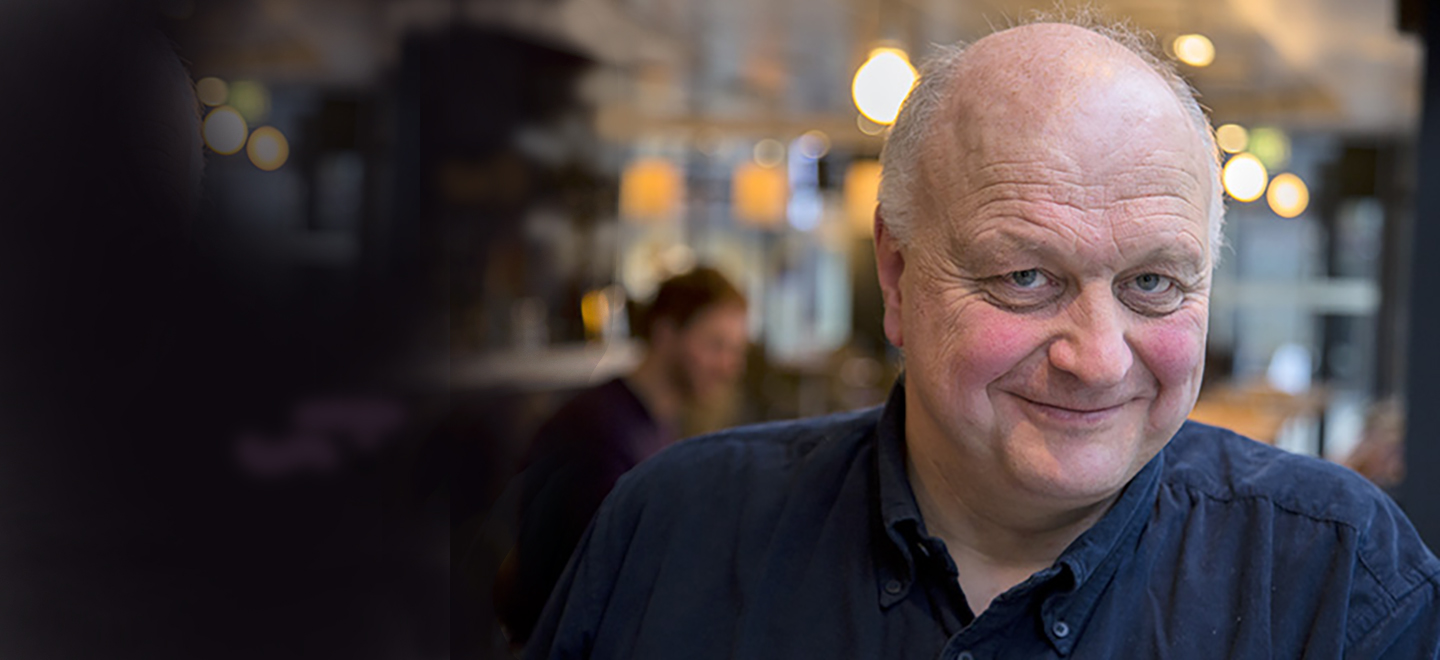 Region:
Region: -
Description:
Dominik Huber started Terroir al Limit in 2004 with his friend Eben Sadie, a South African oenologist. The pair met in Priorat at Mas Martinet, and quickly became friends. Dominik, a native German with a growing interest in wines and gastronomy found in Eben the perfect partner to explore and understand the Catalan region.
With the help of the Pérez family of Mas Martinet, Eben and Dominik purchased some fruit and leased a little corner in the cellar of Cims de Porrera, where they vinified their first vintage of Dits del Terra in 2001. After two years at Cims de Porrera, they moved into a tiny cellar in Torroja del Priorat. From the tiny cellar in Torroja the pair started releasing new cuvées and increasing their range to site-specific wines: Arbossar in 2003, Torroja in 2005, Manyes and Tosses in 2006, Pedra de Guix in 2008, and Terra de Cuques in 2011.
Since its founding, Terroir al Limit has slowly evolved its understanding of the Priorat as a region as capable as Burgundy in its complexity and potential to make elegant and transparent wines. The Torroja and Terra de Cuques are the village wines, Dits del Terra and Arbossar the Premier Crus, and Manyes and Tosses are the Grand Crus.
Eben eventually left the winery to devote himself to his projects in South Africa and Dominik took the reins of the winery. Devoting himself primarily to the cultivation of the growing number of vineyard sites, Dominik could see his vineyard efforts were resulting in healthier fruit. With better fruit coming into the cellar he quickly realized that ripe, concentrated grapes combined with extractive winemaking and aging in barriques didn’t show their vineyards’ authenticity. By favoring wines of infusion rather than extraction, using whole clusters and avoiding pigeage and remontage, the wines emphasized elegance rather than the typical weight of other Priorat wines. Another differential was in the oak treatment; barriques were eschewed and concrete and neutral foudres became the preferred methods of aging.
Realizing that organic or biodynamic farming during an era of global warming is insufficient for a region as hot and dry as the Priorat, Dominik farms rigorously to guarantee the health and vitality of his soils. The goal is to retain as much moisture as possible, reducing the hydric stress on the vines in summer and allowing for an earlier harvest of physiologically ripe fruit.
Through his work with Eben Sadie, and now with the help of Serbian-born Tatjana Peceric (who in the past few years became the head winemaker at Terroir al Limit and its sister projects) Dominik Huber has changed the way the wines of the Priorat have been perceived, showing the world what this region is capable of: characterful wines which are elegant, approachable and explicit about its terroir.Terroir Històric
While working on establishing Terroir al Limit, Dominik Huber became entranced with the Priorat’s history – its rhythms of life, the simple cuisine, and the honest wines that honored their origins. When walking past the crumbling Sindicat Agricola in Torroja, he could recall those few bottles of Priorat he had tasted from vintages in the 1970s, and he envisioned a future where such wines could again be made.
Nostalgic and honest in spirit, the wines of Terroir Històric are a nod to the past and the style of winemaking that was popular at that time. Rather than focusing on individual parcels, Dominik sources grapes from many different vineyards throughout the region. These complex blends – dazzling mosaics of aroma and flavor – are an effort to express the Priorat landscape’s diversity.
Grapes here are sourced from vineyards in Bellmunt, Gratallops, El Lloar, Escaladei, Porrera, Poboleda, Torroja, Vilella Alta, and Vilella Baixa. Some of these are from younger vines planted high up in the Montsant near the border of Escaladei and Morera and where the soils are unique for being clay and limestone rather than schist. Finding that these white varieties are relatively scarce and under-appreciated in the Priorat – especially at the table – a significant percentage of Terroir Històric’s production is white wine. Unlike Terroir al Limit, which was founded on the Burgundian principle of site-specific wines, Terroir Històric is meant to showcase the complexities of the Priorat in its entirety.
There is one red and one white. The white is currently a blend of Garnatxa Blanca and Macabeu, the red, Garnatxa, and Carinyena. Harvest is manual, and the grapes are pressed whole cluster (whites) or fermented whole cluster (reds) without any manipulation, so their flavors are infused rather than extracted. Nothing is added or removed, and the wines ferment and age in concrete tanks. Bottled 6 months after the harvest, they are meant to be drunk young.
This profile and tasting notes were edited from the European Cellars and Terroir al Limit websites, along with the pictures used. For more information please visit: Terroir al Limit and European Cellars.
Image: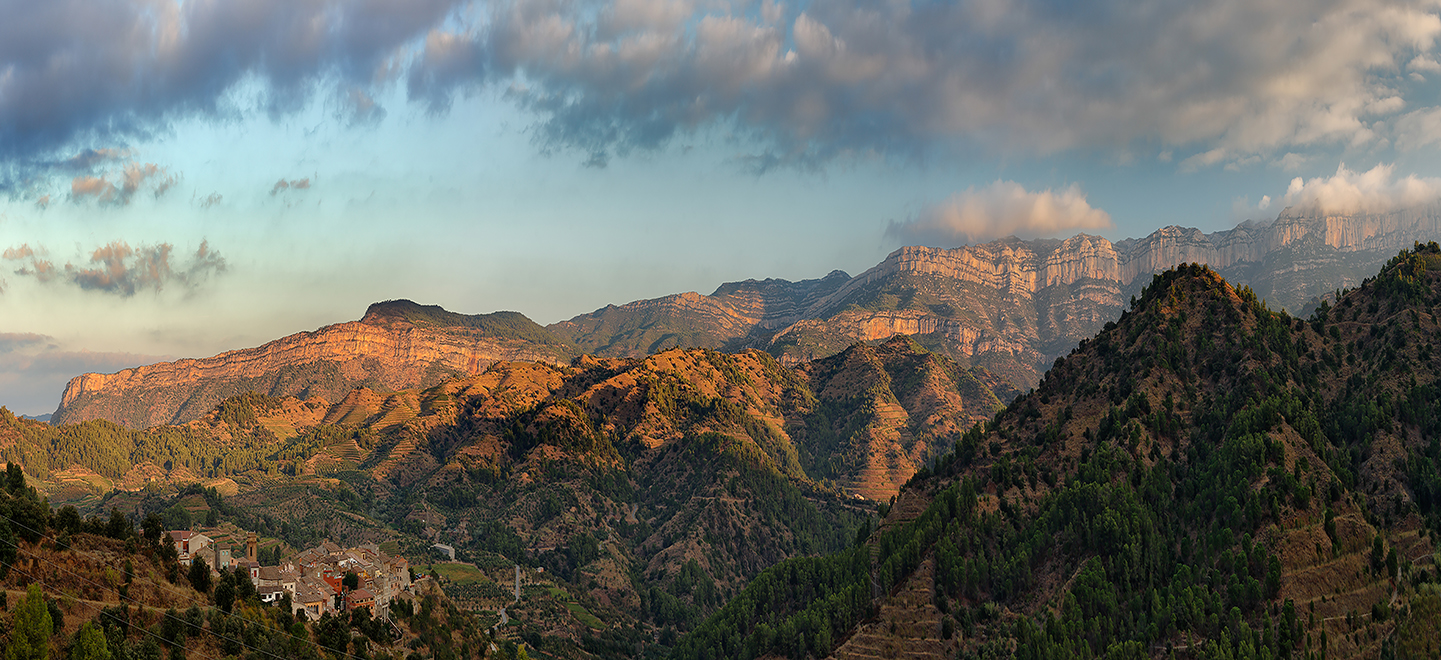 Region:
Region: -
Description:
Due to their location, similar grape varieties, and rich history, the Priorat and DO Montsant are often compared to one another. For this reason, oftentimes, the Monsant is known as the “baby brother” of the Priorat. Wines are seen as fresher, more fruit-forward, and less costly than their Catalonian counterpart. After redefining the wines of Priorat with Terroir al Limit, Dominik Huber, and winemaker Tatjana Peceric, now turn their attention to DO Montsant. In 2015 when Huber purchased one of his iconic Garnacha vineyards, Las Manyes, he also obtained a four-hectare Garnacha parcel just a few hundred feet from the Priorat border in Montsant. With looser appellation rules and the rich, clay soils, this was an opportunity to start with a blank slate, and thus, Terroir Sense Fronteres was born.
In this particular project, Tatjana is in the driver’s seat with her background in winemaking, and love of Grenache. Even so, the team still uses the same ethos applied to the wines of Terroir al Limit in Priorat: early harvests, whole cluster fermentations, gentle extractions, and a complete lack of oak during the aging process.
This profile and tasting notes were edited from the European Cellars and Terroir Sense Fronteres websites, along with the pictures used. For more information please visit: Terroir Sense Fronteres and European Cellars.
Image: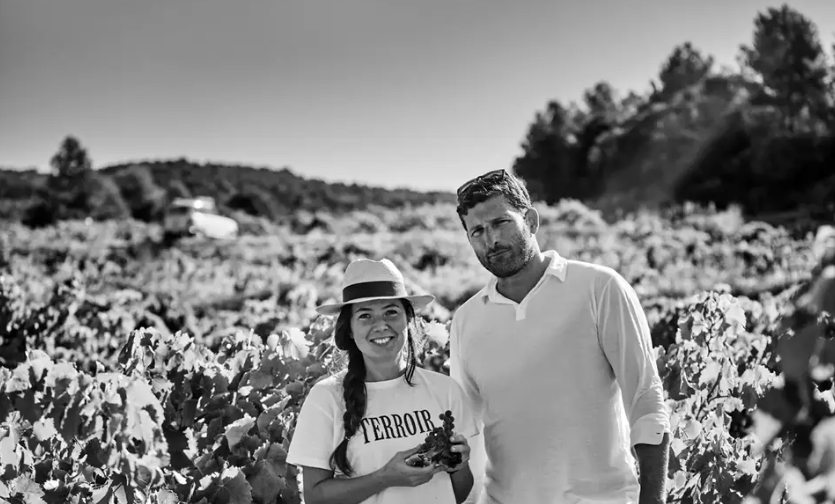 Region:
Region: -
Description:
Thank you to importer Louis/Dressner for this Texier profile:
(Click here for more on Texier from Louis/Dressner and here for the winery's new website!)
It is no exaggeration that Eric Texier is one of the most important people we have come to know in our 30+ years of wine importing. Not important in a boisterous or regal sense, but rather from an evolutionary perspective. People like Eric and his wife Laurence helped us discover that mutual respect, growth and friendship were possible in this line of work, that a "business relationship" could shape philosophies, world views, values and even our senses of humor! For this we are grateful.
A Bordeaux native who has lived in or around Lyon since 1979, Eric is a jovial, energetic and fun-loving person who wants his wines to make their drinkers happy. But he is also a boundary pusher, endlessly questioning his own work (and, let's be honest, that of others) for the sake of moving viticulture and winemaking forward.
Eric is a trailblazer, putting all the but extinct regions of Brézème and Saint Julien en Saint Alban on the map. He experiments with concepts you rarely if ever hear about elsewhere: finding acidity in Marsanne through anforas, not working the soil in favor of cover crops, "infusion" macerations, working on his own grafts, rediscovering forgotten grapes adaptable to the very real threat of climate change...
Strongly opinionated, he is not afraid to ruffle feathers or call people out on their bullsheeeeet in his heavily accented but perfect English. And since Eric always backs his claims with serious research, careful thought and true care for the subject matter, you'd best think twice before writing him off. I mean, the guy used to be a nuclear engineer!
Having said that, Eric loves to learn and exchange. And can even admit when he's wrong! One of the things we are most proud of here at LDM is the cross-pollination of growers we work with: growers who've befriended each other, talked shop for hours and drawn inspiration from each other's know-how and techniques. Eric truly is the poster child and "the glue" of so many of these friendships.
He originally became a winemaker after a first career as an engineer in the nuclear industry and without any family background in vines or wines. As such, his goals and methods developed not so much from his years of schooling, but from his readings, his visiting winemakers around the world, and working in Burgundy with Jean-Marie Guffens at Verget.
After giving up the idea of buying vineyards, which was too costly a proposition for a beginner with his ambitions, he started a small négoce where he selected particularly interesting vineyard plots worked by the sincere, hard-working farmers who grew the healthy grapes he wanted to buy and vinify. He rediscovered nearly forgotten areas of ancient fame, like Brézème in the northern Côtes-du-Rhône, and nurtured relationships with people who tend their vines with passion and care. Over the years, the shift from négociant to vigneron has occurred, and today Eric owns and rents the vast majority of the vines that go into his production. He has also replanted several hectares in Brézème and in Saint-Julien en Saint-Alban with Syrah and Roussanne.
In his purely négoce days, Eric was producing 30 different wines from 10 different origins, mostly but not limited to the Northern Rhône. As a land owner and vigneron, he produces 12 different wines from four different origins, with the Côte Rotie, Rasteau and Châteauneuf du Pape the only remaining cuvées made with purchased fruit.
The wines are vinified in their areas of production, which means a lot of time management and traveling at the time of harvest. When they have obtained their AOC, the young wines are transported to Charnay-en-Beaujolais, just north of Lyon, where Eric lives and owns a wonderful élevage cellar. This beautiful underground, vaulted cellar was built in the 16th century, and temperatures stay cool and stable through the year.
Like all good winemakers, Eric strongly believes that wines are made in the vineyard, and that his work, after the harvest, consists in following the lead of the vintage and accompanying the wines so they fulfill their potential. Exact steps in vinification vary according to the varietals, terroirs and vintages, but the goal is always to provide the grapes, musts and wines with the best environment and to intervene as little as possible.
His techniques for white wines include sorting in the vines and at the winery, whole clusters pressed in a vertical press (that’s the old fashioned wood kind), no added yeasts, barrel, concrete and ceramic fermentation (no new wood), aging on fine lees, malolactic fermentation for all the wines, minimal use of SO2 at bottling only, no pump-overs, fining and filtration only when absolutely necessary.
For his red wines, he does the same sorting at harvest, no destemming most of the time, bringing the grapes to the press by conveyor belts, cold maceration under a CO2 blanket for aromatic extraction, natural yeasts, very little to no extraction during maceration and fermentation. The temperatures are controlled not to exceed 34 degrees C (93F), aging is done mostly in concrete, old foudres and demi-muids of 450L, no filtration and egg white fining only when necessary.
Image: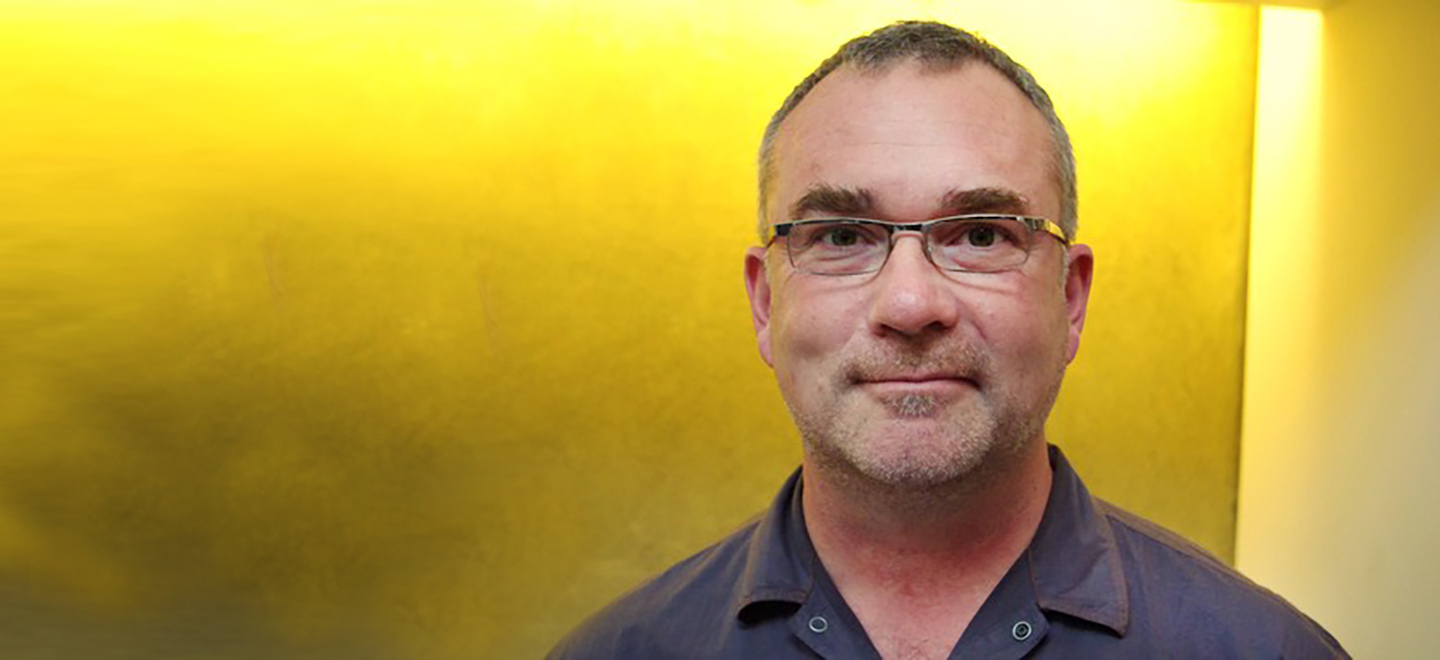 Region:
Region: -
Description:
John Donaghue was working as a skyscraper building engineer in San Francisco when he found his way into wine. Like several other of our wineries, he got his start when he got mixed up with Gideon Beinstock of Clos Saron. He remained working at Clos Saron for several years, working closely with Gideon and learning every aspect of winemaking , from the vineyard to the bottle.
In 2011 he produced his first cuvée, a dense, structured blend of Merlot and Cabernet Sauvignon from North Yuba County. Gideon’s influence was evident in this and subsequent releases, however John’s wines reflect a different style and expression. Using similar low-intervention techniques, neutral oak, and native fermentations, the wines of Thee & Thou are complex, balanced, and lively, with the structure and acid to age for years to come.
Since his beginnings in Yuba, John has gone on to explore other regions such as Lodi, seeking out old vines and great fruit from a variety of terroirs. While the individual expressions are unique and ever changing, John’s careful work remains the same.
Image: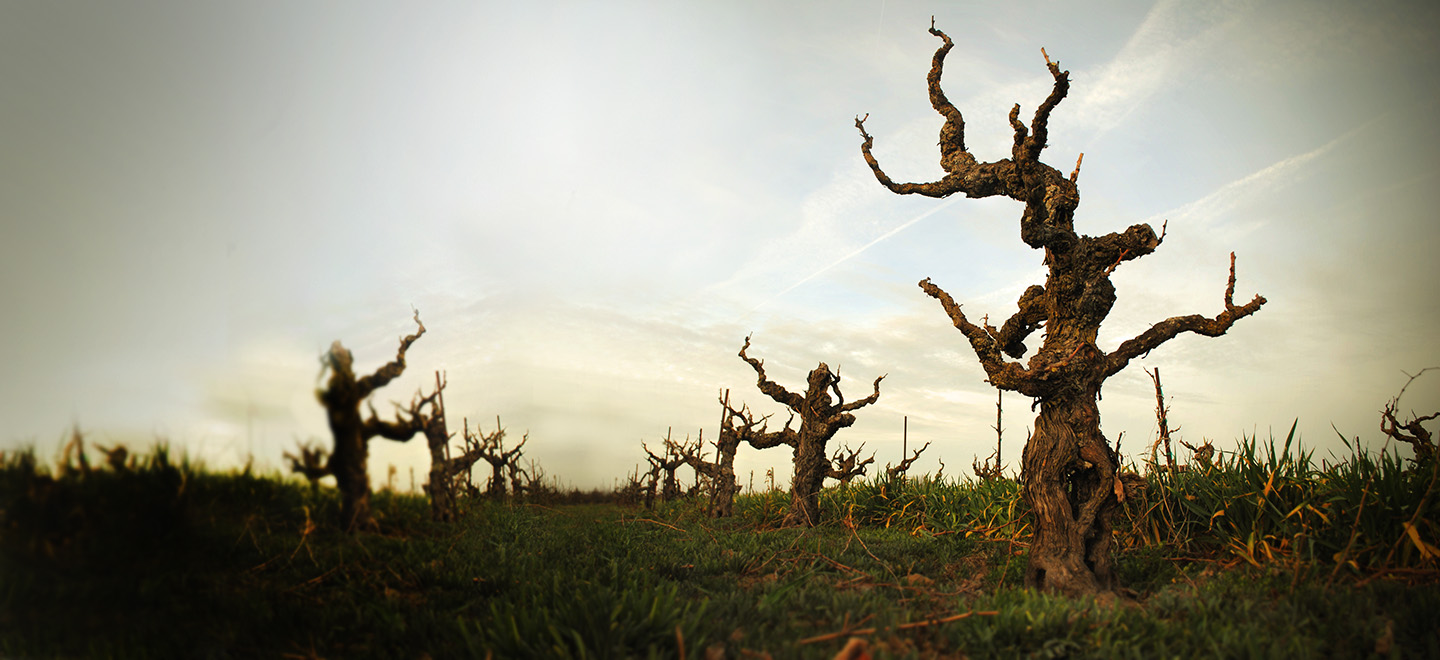 Region:
Region: -
Description:
The Thevenet family’s wines were one of Joe Dressner's and Denyse Louis's first imports: they tasted there in 1987 with Jean Thevenet and were smitten with his unusually rich, complex white Burgundies. His son Gautier has long since taken over the production of three different Viré-Clissé wines from three different properties in the appellation: the original Domaine de la Bongran (family owned), Domaine de Roally (family owned) and Domaine Emilian Gillet (long-term lease). The heart of the estate is Bongran, which lies on a limestone ridge overlooking the Saone River and which Jean’s father began piecing together after World War I. It consists entirely of old Chardonnay clones on chalky, clay-rich marl soils, farmed organically and meticulously by hand. The name "Bongran" has been attributed to a couple of different sources, but Jean's research revealed it to be a reference to a priest by the name of Bongran who once owned some of the vines.
Gautier has stayed true to his father’s and grandfather's winemaking practices, which have long distinguished Bongran wines from all other Viré-Clissé producers: later harvest and thus greater ripeness of the fruit with touches of botrytis at times; minimal intervention in the cellar, including a very slow pressing, lengthy settling and a slow, spontaneous fermentation lasting up to two years; and years of bottle-aging in the cellar before release. Domaine de la Bongran bottles only one wine, a uniquely old-fashioned Viré- Clessé that always has some residual sugar, a result of the hands-off Thevenet approach. The wine does not drink sweet, but rather possesses an extraordinary richness of flavor and texture along with its characteristic firm acidity and minerality. It is unmistakably Burgundian. The concept of any sweetness in a white Burgundy may sound unusual, and today it is—but according to Jean back when and Gautier today, the RS is a distinct part of the expression of their terroir.
Domaine de Roally is a separate property and wine from the Bongran home base. The original proprietor of Roally was Henri Goyard, an old schoolmate of Jean's and a similarly minded vigneron. When Henri decided to retire after the 2000 vintage, Jean purchased the estate and had his son Gautier take it over. The vines are farmed and the wines made identically to those of Bongran. The main difference is that Roally Viré-Clessé is aged for "only" two years in bottle before release versus four years for the Bongran. Neither wine ever sees any wood for fermentation or aging.
The third of the Thevenet Viré Clessé wines is Domaine Emilian Gillet, created decades ago but historically not imported by Louis/Dressner until quite recently. Per Jean Thevenet back in 2012: “Emillian Gillet is an estate I founded in 1988 with vines that have always been rented. Legislation is extremely complicated in France, and it was actually easier to create an entirely new, separate estate than to expand Bongran...The name Gillet is that of my ancestors.”
An historical note: when the Viré-Clessé AOC was created in 1999, the regulations permitted up to 3 grams only of residual sugar. Thus the Thevenet wines did not qualify for the appellation and were classified as Mâcon-Villages. But the sweltering 2003 vintage led to the entire region's ending up with RS in their finished wines, which in turn led to the loosening of the restrictions; suddenly, Bongran and Roally made the Viré-Clessé cut. And the rest is Thevenet history.
Image: Region:
Region: -
Description:
Thank you to importer Louis/Dressner for this profile:
(Click here to learn more about Labaille on the Louis/Dressner website)
Years ago, we visited an old vigneron in Chavignol who had made fabulous Sancerre before his retirement, from old-vine vineyards in Monts Damnés (Sancerre's greatest vineyard site), with élèvage in old foudres and unfiltered bottlings. We asked him who continued to work in that style and he said "Cotat, and my friend Claude."
One thing led to another and we were off to meet Claude Thomas, who was busy pruning his vines in the rain. His wife dragged him into his cellar where he stripped off mud-caked boots and served us several vintages. Thomas was then 73, and wished to retire, but he was holding on in the hope that his daughter and son-in-law would take over. This finally happened when Jean-Paul Labaille, his son-in-law, quit his civil servant job and became a full-time vigneron (for the previous ten vintages, he had taken his vacation during the harvest to be the assistant winemaker to Claude Thomas).
Only minimal changes have occurred. The vineyards remain among the best in Chavignol, with a large proportion of old vines. The old barrels are not in use any more, but the vineyard and cellar work still follow the same time-honored techniques. The Monts Damnés plot is too steep a slope to ever consider machine harvesting, which is now the norm in the appellation, and it requires intensive, non-mechanized vineyard work, but this site is worth the trouble: drainage and exposure are excellen,t and ensure the best ripeness for the vintage. Labaille has somewhat tidied up Thomas' facilities, which used to be in sharp contrast to most cellars in the area; instead of a hyper-hygienic room, with wall-to-wall tiled floors and stainless-steel vats, his was a Burgundian type of cellar. Some cuvées still age in large concrete vats, others in stainless steel, and the oak barrels have been re-placed by newer ones, mostly second-hand, 2 to 3 years old, not in order to impart any oaky character to the wine, but to let it breathe and evolve slowly on its lees.The resulting wine is sensational: rich, fat, round, with layered aromas, a subtle nose and a long finish. Not a typical bistro Sancerre, but a graceful wine meant for aging and pleasure.
Image: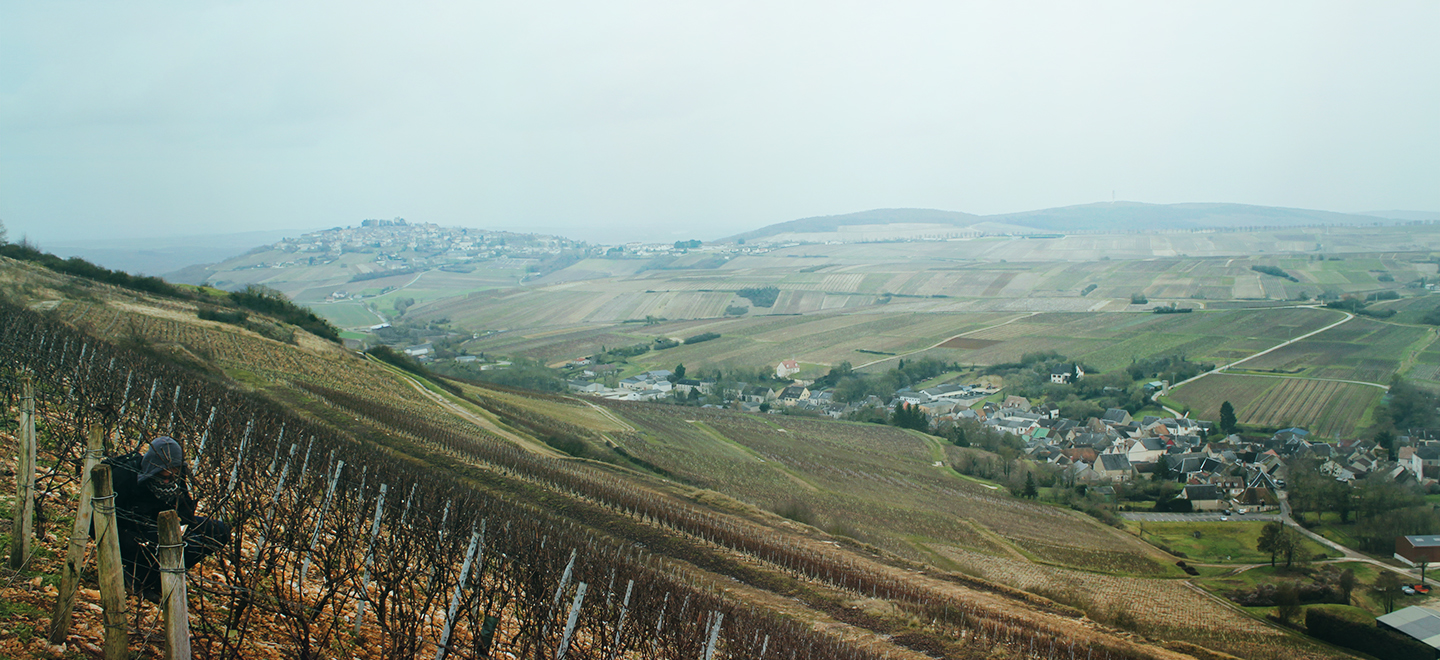 Region:
Region: